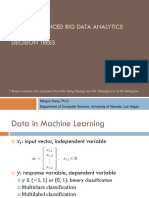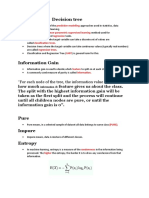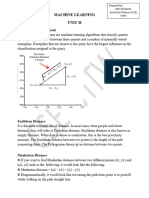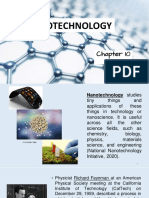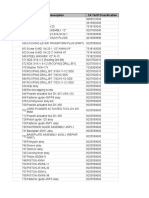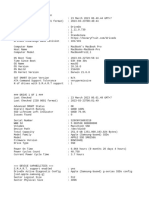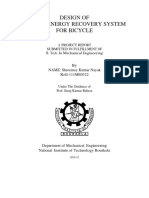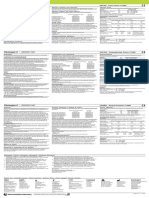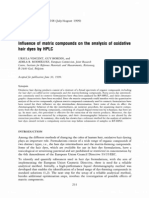0% found this document useful (0 votes)
4 views31 pagesClassification Algorithms
The document provides an overview of performance measurement tools for machine learning models, specifically focusing on the Confusion Matrix and key performance parameters such as Accuracy, Precision, Recall, and F1 Score. It also discusses various machine learning algorithms, particularly K-Nearest Neighbors (KNN) and Decision Trees, detailing their working mechanisms, splitting methods, and evaluation metrics like Gini Impurity and Information Gain. Additionally, it introduces ensemble techniques like Bagging and Boosting, with a focus on Random Forest as a specific Bagging method to enhance predictive accuracy.
Uploaded by
Manish Kumar LakhiwalCopyright
© © All Rights Reserved
We take content rights seriously. If you suspect this is your content, claim it here.
Available Formats
Download as PPTX, PDF, TXT or read online on Scribd
0% found this document useful (0 votes)
4 views31 pagesClassification Algorithms
The document provides an overview of performance measurement tools for machine learning models, specifically focusing on the Confusion Matrix and key performance parameters such as Accuracy, Precision, Recall, and F1 Score. It also discusses various machine learning algorithms, particularly K-Nearest Neighbors (KNN) and Decision Trees, detailing their working mechanisms, splitting methods, and evaluation metrics like Gini Impurity and Information Gain. Additionally, it introduces ensemble techniques like Bagging and Boosting, with a focus on Random Forest as a specific Bagging method to enhance predictive accuracy.
Uploaded by
Manish Kumar LakhiwalCopyright
© © All Rights Reserved
We take content rights seriously. If you suspect this is your content, claim it here.
Available Formats
Download as PPTX, PDF, TXT or read online on Scribd
/ 31




































